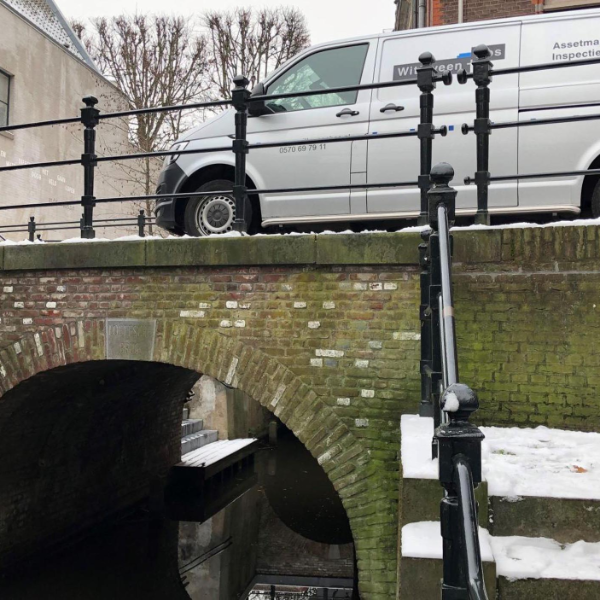Assessment of remaining lifespan and sustainability of structures

Assessment of remaining lifespan and sustainability of structures
How safe are our heritage bridges and wharf cellars? Can they handle the current amount of traffic driving over them? How significantly have their structures weakened since first being built? Commissioned by the municipalities of ’s-Hertogenbosch and Utrecht, Witteveen+Bos is investigating the structural safety of inner city traffic bridges and wharf cellars. To achieve this, we are collaborating with partner firms Iv-Infra, RoyalHaskoning DHV/Nebest and Antea.
Structural safety
In ’s-Hertogenbosch and Utrecht, several masonry structures exist that are driven over by urban traffic. These include bridges and water overpasses, as well as the well-known wharf cellars in Utrecht. A comprehensive overview of their structural safety and state of repair is essential to ensure the continued use of these largely heritage structures over the coming decades. In particular, we are carrying out various activities to determine the structural safety of the bridges in ’s-Hertogenbosch and the wharf cellars in Utrecht. Where necessary, we are recommending measures to increase the structures’ strength.
Targeted inspections
In order to determine the structural safety, Witteveen+Bos is conducting targeted inspections covering both condition and structure. We are also carrying out materials testing, investigations into the remaining lifespan, and mathematical structural assessments (including the NEN 8700 series and CROW-CUR Recommendation 124). As required, we are determining the measures necessary to increase the lifespan and providing an estimate of the associated costs. 3D calculation software allows the (hidden) structural capacities to be better utilised, often meaning that structural reinforcement can be avoided.
Appropriate restoration measures
All of this takes place in an environment of open dialogue and good collaboration with the other project partners and both municipalities. The experiences and lessons learned from the projects are openly shared within the collaborative setting. In the projects in ’s-Hertogenbosch, for example, an approach was developed for the assessment of arched masonry structures that was applied and further developed in assessing the Utrecht wharf cellars. This allows us, together, to determine appropriate restoration measures while fully preserving the structures’ heritage value.
Both in the Netherlands and elsewhere, the need for a good overview of the structural safety and state of repair of existing civil engineering structures has increased rapidly in recent years. Many structures are approaching the end of their (technical) lifespan. The scale of the government’s ‘Replacement and Renovation Project’ requires pooling of the knowledge and experience of all parties involved. Together, we can ensure the safe use of our array of civil engineering structures for the coming decades.
More information?



